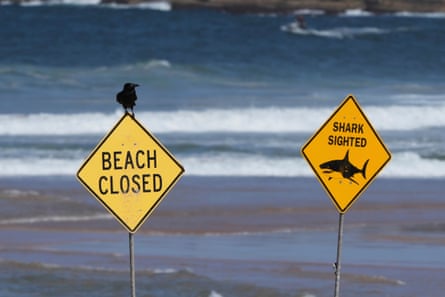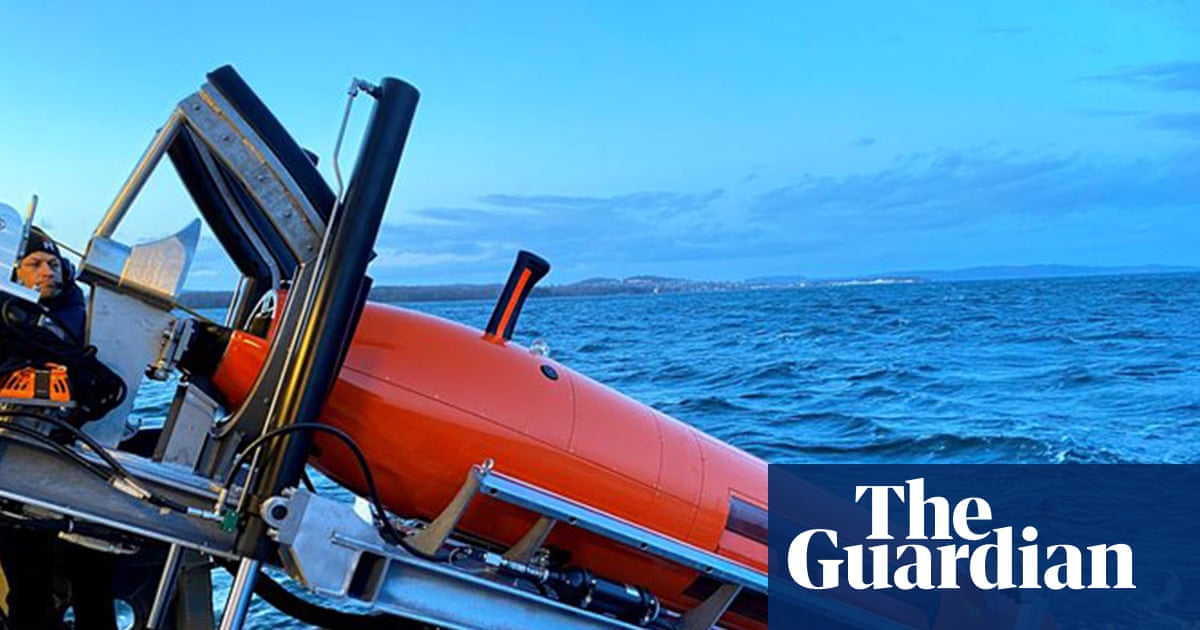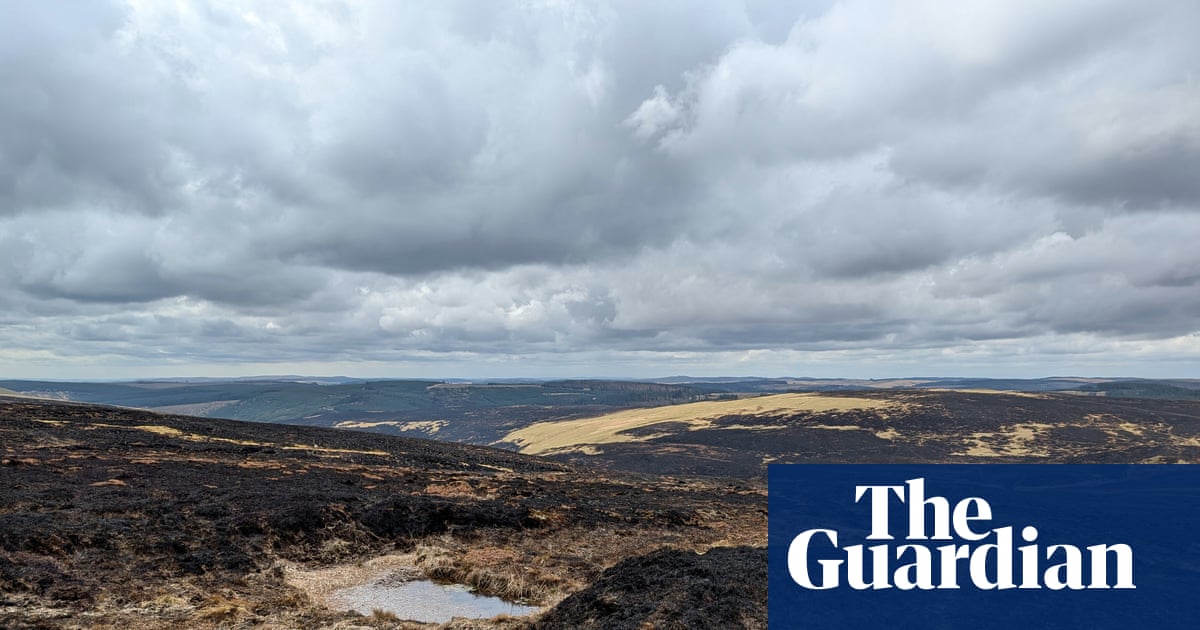The Sydney man had been in the water with mates for about half an hour on Saturday morning off the city’s northern beaches.
The arrival of spring, after weeks of torrential rain, and an easing swell, had sent thousands back to the water across the city.
He was sitting on his board, behind the surf break – about 100 metres from the shore of Long Reef beach, police estimated – when witnesses said he was suddenly dragged under the water, taken by what is suspected to have been a great white shark.
Fellow surfers, who’d gone in to the beach, went back to the water to pull him to the shore, but he had sustained “catastrophic injuries”, police said (losing both legs, according to lifesaving sources), and could not be resuscitated. He had died in the water.
Local media reported that the man, a 57-year-old father of one and experienced surfer, was part of the area’s tight-knit surfing community.
The Dee Why and neighbouring Long Reef beaches are known surf spots, framed by two sweeping headlines on the coastline in the northern suburbs of Sydney. In the hours after the attack, a handful of friends, some still in wetsuits from the water, and family, who arrived after the tragedy, consoled each other, hugging as they sat in a tight knot on the sand.
Metres away, emergency services workers had pitched a marquee on the sand, cordoned off by police tape. Police boats and surf lifesavers on jet skis patrolled the otherwise-empty water off the beach – along with drones and a helicopter – looking for the shark.
“It’s a terrible, terrible thing,” New South Wales police Supt John Duncan said later. “It’s one of those freak incidents that happens very, very rarely ... a great tragedy.”
The return of warmer weather heralds a return to the beach for this part of the world.
Within weeks, weekends at beaches across Australia will be dominated by junior lifesavers – known as “nippers” – swimming and board-riding along thousands of kilometres of coastline. A junior surfing competition was being held nearby at the time of the attack on Saturday.
Rod McGibbon, of NSW Surf Life Saving, told press on Saturday that the attack was a deeply confronting scene. “We understand both him and his board disappeared underwater and it’s quite brave of those people to go in and rescue him while there’s a shark in the water,” he said.
“It’s a very considerate community,” he reflected. “They look after one another. If they see somebody in trouble, they generally help out.”
Local surfer Bill Sakula was preparing to go in when news of the attack broke.
“It’s going to send shockwaves through the community,” he said. “Everyone is going to be a little bit nervous for a while.”
Sakula described the attack as “absolutely tragic”. But he said surfers understood and accepted the risk of shark attack: “At some point, we’re all going to paddle back out … it’s a passion”.
Two sections of the man’s surfboard were recovered from the water, and are being examined to help determine the species of shark.
There have been several fatal shark attacks along different Australian coastlines in recent years.
In February, 17-year-old Charlize Zmuda suffered fatal wounds when she was attacked while swimming at Woorim beach in southeast Queensland. She died shortly after being pulled from the water.
And in March, Victorian holidaymaker, Steven Payne, 37, died after he was bitten by a great white shark as he surfed on a West Australian beach near Esperance. His remains were never recovered.
There is increased awareness of sharks – there has been a surge in amateur and professional drone presence monitoring the water, and online apps now alert swimmers to the presence of tagged sharks near beaches – but attacks are not common in Sydney.
The last fatal attack in the city was in 2022 when British diving instructor Simon Nellist was taken by a great white while swimming in deep water off rocks in Little Bay, south of the city.
A swimmer was attacked by a bull shark off a wharf in Elizabeth Bay, also inside the harbour, in 2024, but survived.
Prof Charlie Huveneers of Flinders University, research leader of the Southern Shark Ecology Group, said despite the “high variability” in risk, Australia was following a global trend of increasing numbers of shark attacks.
Huveneers said the risk of shark bite was difficult to predict and influenced by a wide range of factors, including human population growth, habitat modification and destruction, declining water quality, climate change and anomalous weather patterns.
“It is likely to be due to a combination of these factors, rather than just one.”

Saturday’s attack is likely to refocus debate on Sydney’s coastline over the use of shark nets on city beaches. The man was surfing on a stretch of beach in between Dee Why and Long Reef beaches, about 100 metres north of the Dee Why surf club. Dee Why has a shark net installed about 500 metres from shore: Long Reef, immediately north, is not netted.
The nets are not comprehensive shields protecting beachgoers; rather, they are nets about 150m long and sixm deep, set 10-12m below the surface, about 500m from the shore. Sharks and other marine animals can swim over, under or around.
Critics argue they offer little protection – “like a table tennis net on a soccer pitch” – citing research that shows 40% of the sharks caught in nets are on entrapped on the inside, and that the nets also indiscriminately catch other marine life.
Research published in 2024 found no difference in unprovoked human-shark interactions at netted versus un-netted beaches since the 2000s.
NSW – Australia’s most populous state – first introduced nets in the 1930s, but their use has since expanded to include 51 beaches between Newcastle, north of Sydney, and Wollongong, to the south.
The state has a broader shark management program, which includes drone surveillance, shark tagging, and real-time detection, as well as SMART drumlines (where sharks are caught, tagged and released) and community education.
On Saturday night, locals had begun sharing tributes online. One posted that the Sydney surf community had lost one of its own.
“A man doing what he loved – chasing waves – never made it back to shore. Our thoughts are with his family, his mates, and every surfer feeling this hit tonight,” they wrote. “For all who live and breathe the saltwater life, we ride on.”
“To lose such a keystone … in so radical a sudden way leaves anyone with a sense of heritage stone cold heartbroken,” wrote another.
“There, but for the Grace of God, go us.”
– with AAP

 3 months ago
61
3 months ago
61

















































